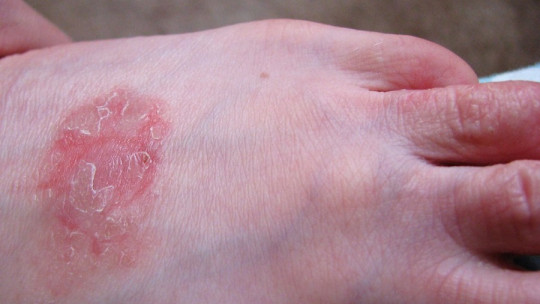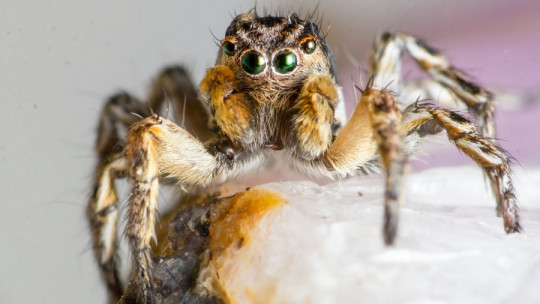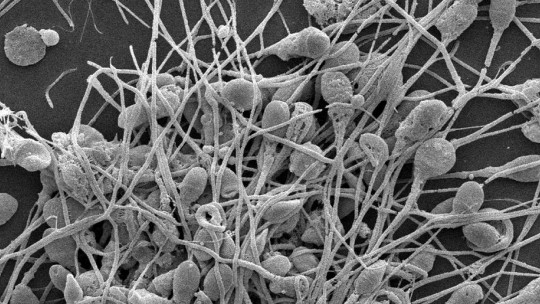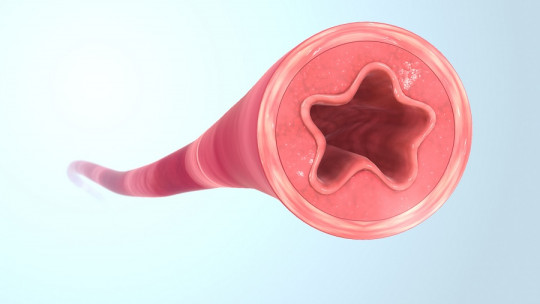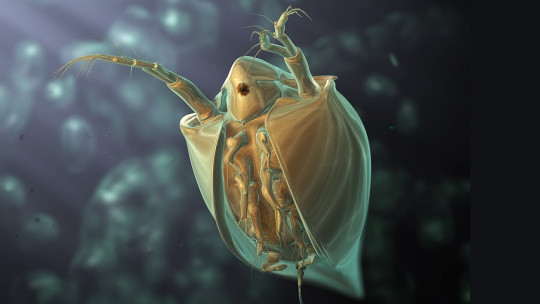
When we talk about fleas, the first thing we usually think of is the image of an animal infested by these beings often a dog or a cat, continually scratching because of the itch.
But not only can these animals suffer flea bites, but it is also easy for them to infest humans. In this article We are going to talk precisely about flea bites and what they mean
This is what fleas are like
Fleas are small insects, generally between one and seven millimeters in length, which are part of the order of siphonaptera or wingless insects. Its body is hard and resistant, having a relatively small head compared to the rest of the organism. They have long and strong hind legs that allow them to make large jumps, this being the main mechanism by which they move and jump from one organism to another.
These are parasitic insects that feed mainly on the blood of other animals, especially mammals. To do this, they have saw-shaped jaws that allow them to tear the skin through which they can obtain nutrition. In the case of females, they need this blood to lay eggs, which they do frequently throughout their lives.
The eggs are usually placed in the host, with the mother flea placing small fecal remains in which it provides digested blood that can nourish the future larva. There are numerous species of fleas, and differences can be found with respect to their morphology or the type of species they infect
Flea bite: symptoms
Fleas bite to feed on other animals, mostly mammals. In this sense, they are common in animals such as dogs, cats, rats or horses. But they can also bite humans and jump from one species to another. Its bite tends to occur on the extremities (especially the lower ones), at least in humans. The bite in question can be painful
Once it occurs, it is sometimes difficult to distinguish between flea bites and those of other insects. In this aspect, fleas are characterized by bleeding easily when scratched (in fact, it is common to find traces of blood on clothing or sheets when the bites are on humans) and by being arranged in rows, given that these beings tend to to move to different points to snack instead of focusing on a single area.
Our skin’s reaction to a flea bite is usually rapid, appearing within a few minutes. A small lump with a point in the center usually appears (where the flea has pierced the skin), which generates a high level of itching or pruritus and redness in the area It is common for the area to become inflamed (and not just the bite itself).
A possible complication of the flea bite is the appearance of a skin infection, which will often be accompanied by fever and other typical symptoms of infection such as fever or fatigue. Sometimes, in severe cases, anemia could occur.
Another possible complication is that which occurs in people who are allergic to its bite, which could cause the presence of blisters and skin rashes, emotional sensitivity, fatigue, diarrhea or respiratory problems that could lead to anaphylactic shock.
Some diseases transmitted by fleas
As a general rule, a flea bite is annoying but does not usually cause major complications. However, as with mosquitoes, there is a danger that they carry some type of virus or bacteria that can transmit some type of disease.
Not in vain, it was the bite of fleas that caused the contagion and spread of one of the largest pandemics in history: the Black Death This disease was introduced into Europe by fleas from rats traveling on boats, through the transmission of the Yersinia pestis bacteria, and caused the death of between thirty and sixty percent of the population throughout the territory due to the one that expanded (at that time most of the known world).
Although the bubonic plague (which generated buboes and caused notable inflammation of the ganglia) is the one that generated the greatest pandemic and the most common and well-known, the truth is that pneumonic plague, neurological plague and septicemic plague also exist. Although it is not currently considered the pandemic it once was, there are still some cases of this disease.
Apart from the plague, it has been seen that flea bites can transmit diseases such as typhus or leishmaniasis, among many others. It can also introduce tapeworm or tapeworm eggs if the flea is accidentally or voluntarily ingested (for example by some children). These diseases can be spread within the same species or passed to others, and it is not impossible for them to be transmitted from animal to human or vice versa.
Treatment
Generally, the flea bite itself is not treated nor is treatment sought unless it is accompanied by allergic or other symptoms Usually no treatment is received, with the possible exception of the application of cream. In cases of allergies, the use of antihistamines will reduce the symptoms. It may be necessary to inject epinephrine in cases of anaphylactic shock and/or the use of glucocorticoids. If any type of bacteria has been transmitted, antibiotic medication will tend to be used.
What is important is prevention: hygiene of the environment and of the person and/or pets will make the possibility of infestation difficult. Likewise, it is essential to keep vaccines for both people and animals up to date so that certain diseases cannot be transmitted to them. In pets, the use of pipettes is recommended to prevent the approach of fleas. Special caution must be taken with pregnant women and children, as they are at greater risk.


